The two bodies recovered last week from the Mubarazi River were buried this Tuesday, August 16, 2016 in Muramvya cemetery. According to the wife of our colleague Jean Bigirimana, the latter is not among them.
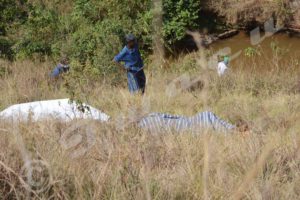
Both bodies from the Mubarazi River were buried without being identified formally.
“After identification, we buried them, because the bodies were in an advanced state of decomposition.” Said Dieudonné Nsabimana, the Muramvya commune administrator.
According to human rights defenders in Muramvya, it was the same official who took the responsibility for the activity, on Friday afternoon, August 16, 2016 in Muramvya cemetery three days after being recovered from the Mubarazi river.
The Muramvya commune administrator emphasized that the two bodies were buried on the orders of the Muramvya province public prosecutor.
This rushed burial was not appreciated. “Why were they quick to bury them without their identities being known?” Asked an advocate of human rights there. For him, as the remains were kept in a cold room, there was no need hurrying. Much like the Iwacu Press Group, the employer of the journalist, human rights defenders had requested via the CNIDH, a scientific identification of these two bodies fished out of the Mubarazi. “Even if it may not be Jean Bigirimana, Burundians must know the identity of these two bodies.” But according to the same sources in Muramvya, a desire to get rid of the body quickly emerged. Thus, there would have been several attempts to bury these bodies in secret before.
“It’s only a temporary burial. We did the mapping of places and we put them in body bags. Even after 40 years, we can still identify them”, said the medical examiner who checked up on the bodies.
According to him, they made an “ad mortem and post-mortem” comparison to see if one of the bodies was that of Jean Bigirimana.
Pierre Nkurikiye, the police spokesman said the case was forwarded to the prosecutor after ‘identification process.’
“The police will continue the investigation under the direction of the prosecution. With the progress of the investigation, we will exhume the bodies. ”
When contacted, Agnes Bangiricenge, spokesperson of the general prosecution said she could not react upon the matter as she was on leave. She sent us to the Attorney General of the Republic. Iwacu tried to contact him but in vain.
“Jean is not among them”
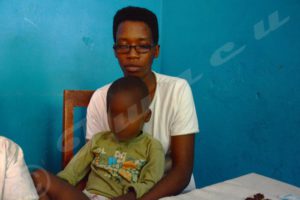
Godeberthe Hakizimana: “After reviewing these bodies, I think Jean is not among them. “
On Friday 12 August, the police spokesman had said on his twitter account that “the two bodies were identified.
There is no Jean. The Muramvya Prosecution continues the investigation.” Pierre Nkurikiye explains that the purpose of the tweet was to remove the ambiguity by emphasizing that the journalist is not among them.
Godeberthe Hakizimana, the spouse of Jean Bigirimana, was taken, on 12 August, to Muramvya Hospital under the aegis of the Human Rights Commission- CNIDH. The commission did not even inform the Iwacu Press Group. The objective of this trip was to identify the two corpses fished out of the Mubarazi River.
“After a few minutes watching the bodies I became convinced that Jean was not among them”, said Godeberthe Hakizimana, the wife of our colleague abducted on 22 July 2016.
Mrs. Bigirimana bases her beliefs on the review of toenails and hands of those corpses. The mother of two boys also talks about clothing found on the bodies that do not match with the clothes worn by Jean before his disappearance.
In addition to the CNIDH delegation, the Muramvya police commissioner and the prosecutor of that province also attended the “identification” procedure which was quickly concluded with a report.
Mrs. Bigirimana went out horrified by the identification session that she took part in. According to her, the corpses in advanced decomposition were not easy to identify. “One of the bodies was beheaded. These images passed through my mind during nights since that day.” What the journalist’s wife lived through alone in Muramvya Hospital morgue was horrible.
In a letter to CNIDH chairman , the Iwacu Press Group Director regrets that Iwacu was not informed about this approach in order to be with Mrs. Bigirimana to support her in this difficult situation. “It is a question of humanity”, wrote Antoine Kaburahe. The CNIDH did not even react.
The only good news, if one can say so, while leaving Muramvya, the poor woman said she was comforted and full of hope to find her husband still alive … somewhere.
Where is the main witness?
Sources indicate that Abel Ahishakiye, an agent of the National Intelligence Service (SNR), who had an appointment with Jean Bigirimana the day of his disappearance, would have been abducted. For the police, this is only a rumor.
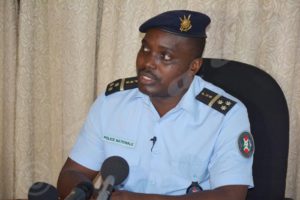
Pierre Nkurikiye : “No complaints, so no investigation”
“He got into a pickup with tinted windows and without identification number. Since that day, he is still missing”, said his relatives. According to them, he answered to a telephone call on 11 August 2016 around 8 pm, a call from a person who is still unknown up to now. They met at the Nyabagere River in Bujumbura the capital.
These relatives ensure he would have written a message saying that he did not know what trap he fell in. According to reliable sources from Muramvya province headquarters, Abel Ahishakiye had not lived in Muramvya since two weeks.
“We had heard that he is now in Bujumbura the capital”, they say.
The same sources indicate that he said he was threatened because of what he knew about the disappearance of Jean Bigirimana.
The police call it a rumor
“No complaints, so no investigation,” This is the reaction of the spokesman of the police. According to him, the police cannot voluntarily investigate on the disappearance of Abel Ahishakiye.” The investigation only begins when the police become aware of the crime. We consider this as a rumor «He explains 4 modes of referral.” when the crime is committed in the presence of a police officer; when either the victim or legal claimant complains; when there is a witnesses’ denunciation and finally when the police receive an order from a prosecutor. ”
The Iwacu press group is worried about these reports over the disappearance of Abel Ahishakiye, the key element in this case.
Telephone records from Jean’s mobile phone and the investigations carried out by the Iwacu press group show several calls between Jean and that inhabitant of Bukeye, who is still unknown to the family of our missing colleague. One of his phone calls drew attention. It was a call which was made shortly before Jean decided to go to Bugarama.
Contacted by Iwacu, he denied, at first, to know about our colleague and there were disputes on the phone the day Jean disappeared. “You only die once. To live or not to live is the same. “, said the SNR agent, with a threatening voice. Then, he said to be called Alexis Nimubona. Later, Abel Ahishakiye confessed himself to have met John shortly before his disappearance.
Iwacu informed the CNIDH its suspicion about the role of Abel Ahishakiye. According to that commission, it would have met Ahishakiye to talk with him when going to Muramvya to carry out investigations. Would he have cornered himself to escape from justice? Is it a kidnapping operated by those who abducted Jean to cover their tracks? What is certain, the investigation becomes increasingly difficult with this disappearance.
Note that Ahishakiye Abel is a student in the 4th year in Muramvya paramedical school. He also works in a security company.
“Initially, he was in the leading organs of the opposition political party Movement for Solidarity and Democracy (MSD) in Muramvya province. His other associates fled to Rwanda but he stayed in Burundi. Today, he is an agent of the Intelligence Agency, “said a Muramvya resident.
The liquidation of corpses or a perfect crime
It has been almost a month that the journalist Jean Bigirimana has gone missing. Antoine Kaburahe the Iwacu Press Group director draws some lessons from this difficult investigation.
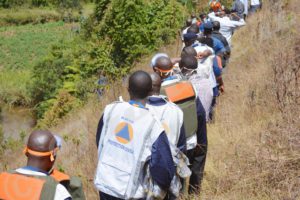 The disappearance of Jean Bigirimana reminds me an editorial I wrote in July 2008. I focused on tortured and decomposed bodies found floating on the Ruvubu river in Muyinga northern province during the 2006 dry season.
The disappearance of Jean Bigirimana reminds me an editorial I wrote in July 2008. I focused on tortured and decomposed bodies found floating on the Ruvubu river in Muyinga northern province during the 2006 dry season.
Anonymous dead, unidentified bodies … The victim is denied in death itself. It degenerates into nothing. The victim is literally erased. Remember the body of Patrice Lumumba dissolved in acid. Or in Argentina during the dictatorship, people were disappearing without a trace.
Jean Bigirimana is not dead. He’s … missing. It’s terrible, because the representation of death allows a form – though still inadequate – of symbolic reparation. Erasing traces already addresses what Freud called the work of mourning.
This process does not engage without the test of reality. Not seeing the body reinforces “madly ” the denial of death. Thus, our colleague’s wife after this terrible “identification” to which she was subjected, she left Muramvya with a “hope that her husband is still alive. ” As she did not see his body, we can understand. And we hope this is the case.
To erase the victim’s trace. By this act we leave humanity by refusing our tradition (funeral ritual , story ) to those who rock ipso facto in nothing
A commission in high heels
Iwacu journalists reached as far as they could in their rather very difficult investigations. Thanks to their courage, two bodies that had been taken as nothing and thrown into a cliff were recovered. We were judged to have been naïve in trusting too much the CNIDH (National Independent Commission for Human Rights). They were right to some extent.
We believed that the commission would examine the case, investigate it and play the leading role in research. Our reporters were ready to contribute. But we had the sad impression that we were forcing CNIDH. The incident of the commission’s pretended investigator in high heels who joined the journalists on the rocky trails by the Mubarazi
River banks would have made people laugh if it had not been in a sad situation of a missing, not to say a murdered person. Predictably, she didn’t go far and preferred “to wait for the return of the investigators” in a 4×4 Jeep.
The story of high heels is in fact revealing about a commission that was more predisposed to talk than to investigate. We will also remember this “descent” of the announced commission, hold on tight the day before, to “investigate” in Muramvya
After that “investigation”, the CNIDH held a press conference to say they had visited the home of the Intelligence service head in Muramvya and that they had found nothing. Would that cause us to laugh or cry? Afterwards, the CNIDH didn’t care to reply any correspondence by Iwacu. A letter by HRW that, like Iwacu, demanded not to rush the burial of the bodies recovered in Muramvya was equally unanswered.
While cases of disappearance, torture and assassination are reported on a daily basis, history will remind us of the extreme passivity of the CNIDH during this dark period of our country. For some, time is the best medicine. They let journalists and other human rights activists get a move on.
There is a constant and well-crafted refrain that should be written on the epitaphs of our graves: “Baracabitohoza” (The investigations are still going on).
Despite our limited means, armed with strong determination we were able to learn the truth about the disappearance of our colleague. We sincerely thank anyone who helped our journalists. This tragedy helped us learn that we are not alone.
Burundians that some people may say are lethargic and apathetic observe and understand. “Uburundi bugona buri maso” (Burundians see what happens around them). Torturers, kidnappers and murderers should be aware of that.
Extracts from the letters of Iwacu to the president of CNIDH
Iwacu informed the commission that partners were ready to give scientific support to formally identify the bodies.
Iwacu got no reply.
“We were informed that, yesterday, attempts to secretly bury the bodies discovered by Iwacu journalists in Muramvya were made. We request that you use your prerogatives to stop that stealthy burial because Iwacu Press Group seeks to be formally informed that Jean Bigirimana is not one of those bodies”
“We heard that the spouse of our missing colleague, Jean Bigirimana, was taken to Muramvya mortuary to “recognize” the dead bodies discovered by journalists in the Mubarazi river. The CNIDH was part of the team that discovered them. As we shared with the CNIDH the results of our inquiries, Iwacu would appreciate it if it had been informed about the procedure so that it could support Mrs.Bigirimana in that painful task. (…)
We believe the CNIDH will not rely only on a visual conclusion by a spouse in shock. To leave no room for any slight doubt, it is necessary, and we believe you will agree with us, to have a scientific confirmation.

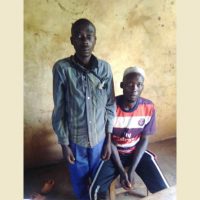
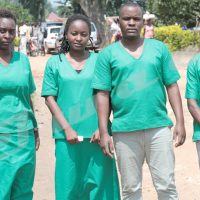
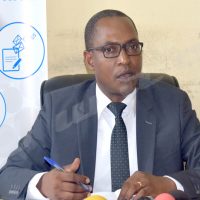

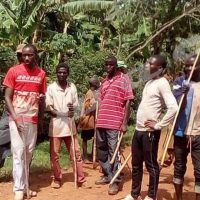













 IWACU Open Data
IWACU Open Data

